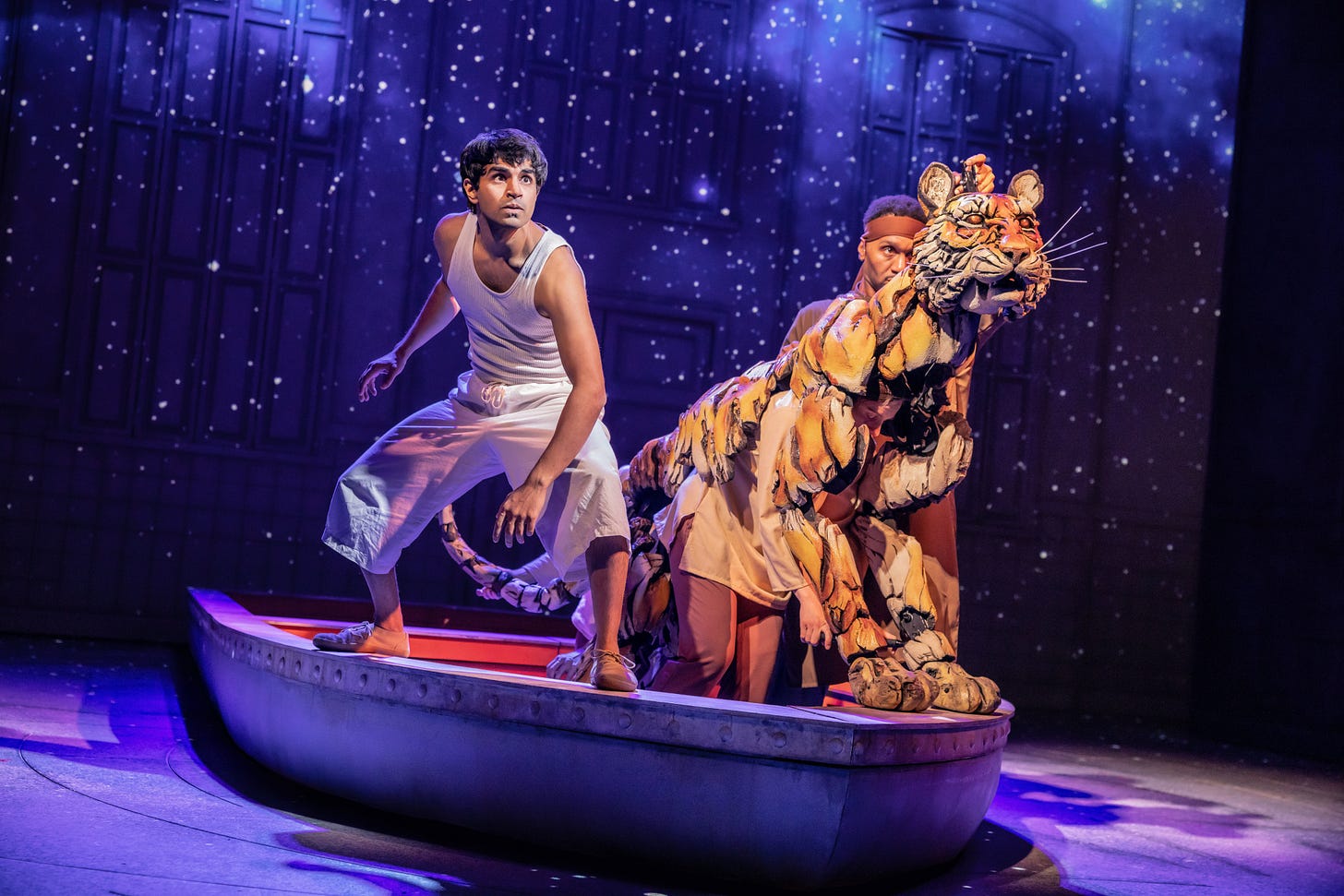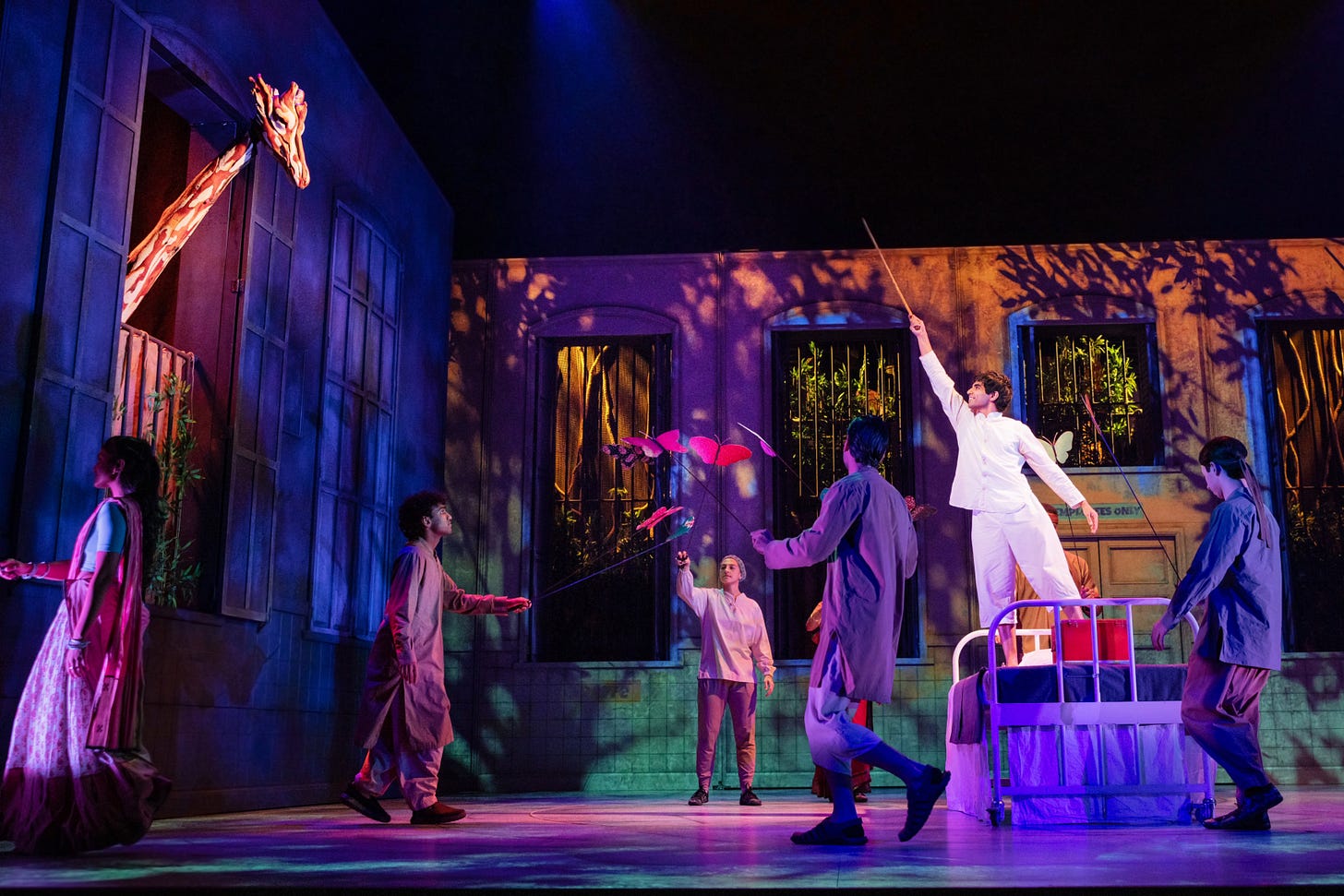"Life of Pi" offers theatrical spectacle that will make you believe

Pi Day came early this year at the Wharton Center.
Life of Pi, the 2023 stage adaptation of the equally lauded 2001 novel and 2012 film, roared into East Lansing for the first time March 11.
The story follows Pi Patel as he recounts the story of how he survived on a lifeboat for more than 200 days with a zebra, an orangutan, a hyena and, of course, famed Bengal tiger Richard Parker.
The production is nothing short of a spectacle.
Each of those animals are embodied in the form of elaborate puppets, designed by Finn Caldwell and Nick Barnes, which are operated by puppeteers who exhibit superb dexterity and fluidity to give them a lifelike aura – when Richard Parker gets ready to pounce, you’ll be on the edge of your seat, nearly forgetting that there’s not an actual tiger on stage.
Smaller animals from the sky and the ocean are also present, with gorgeous flurries of butterflies fluttering around the stage at the start of the show and equally mesmerizing schools of fish gracefully hitting choreographed formations.
This all takes place in front of a simple yet impressively versatile set, designed by Tim Hatley, which is comprised of three walls, a bed and a lifeboat on a turntable. Hidden doors in the walls open and close as needed to turn the seemingly simple space into a bustling marketplace, a zoo, a hospital, a cargo ship or a lifeboat in the middle of the ocean as needed.

When Pi is recounting his story of being stuck at sea, projections help place the audience in the middle of the ocean with him.
Not limited to just providing water effects, the projections designed by Andrzej Goulding are also used to set the scene by complimenting the practical props and set pieces, like when time cards are displayed on the side of the boat and on papers picked up by the ensemble cast members as Pi discards them from his first aid kit, or when they use The Muppets’ technique of “traveling by map” to sail through the ocean in mere seconds.
Lighting designed by Tim Lutkin and Tim Deiling also helps to elevate the story and scenery.
Carefully lighting the puppets helps you to suspend your disbelief, while the puppeteers remain visible enough to admire their remarkable control and teamwork.
Flashes of light synced to climatic action sequences add to the dramatic effect and contribute to your racing heartrate.

Glowing rays of sunlight when deceased loved ones “visit” Pi while he is stranded at sea provides an easily understood visual representation of the afterlife, regardless of which of the three religions Pi starts the show dabbling in he happens to land on.
Pi’s story is one of faith, fear, hope and love. He does not answer which of the three religions audience members should view as the one true religion, and is even accepting of atheism; nor does he concretely answer exactly which story about what happened while he was stranded at sea is true.
Instead, Pi implores you to believe something, explaining that he does not understand agnostic people, who are choosing to not believe or disbelieve anything.
Whether the tale he tells is true, dramatized for illustrative purposes or a case of trauma distorting memories as a form of survival is up to each individual audience member’s interpretation.
But he highlights the importance of that storytelling, one way or another, arguing that fear is “life’s one true opponent” and that “you must fight hard to shine the light of words upon it” lest you repress it and allow it to continually gnaw away at you forever.
If it happens to be visually spectacular – representing numerous complex elements working perfectly in tandem to create a breathtaking environment – it becomes that much easier to believe.
Pi Day lasts all week in East Lansing, with “Life of Pi” continuing at the Wharton Center until March 16.

